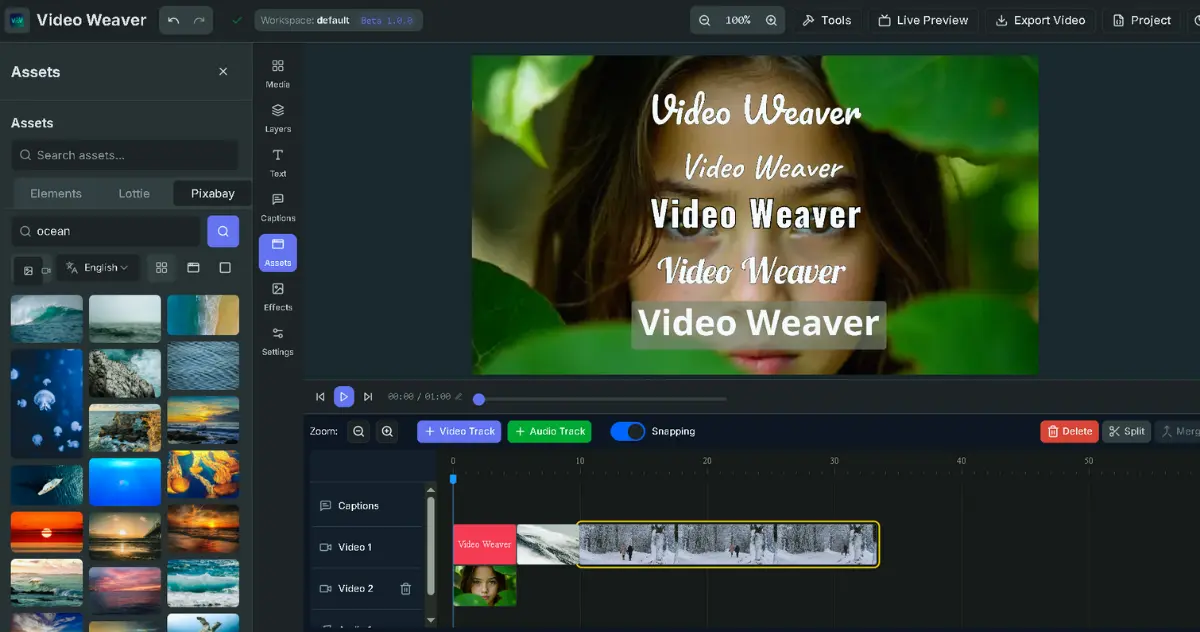More than a year after the release of SAM 2, Meta has simultaneously unveiled its next-generation vision models, SAM 3 and SAM 3D. The former can understand commands and accurately track objects in videos, while the latter can instantly convert flat photos into 3D models. The combination of these two technologies not only changes the logic of image editing but also evolves computer vision from “recognition” to “spatial understanding.” This article will take you through the technical core of these two major models, their practical applications, and how they are changing our digital lives.
Imagine you’re filming your pet dog running on the grass with your phone. In the past, if you wanted to isolate the dog in the video and add special effects, you might have had to edit frame by frame or rely on not-so-smart automatic selection tools.
But now, things are completely different.
Meta just released two major updates: SAM 3 (Segment Anything Model 3) and SAM 3D. This is not just a version number jump, but a qualitative leap. If previous AIs were like a child just learning to recognize pictures, then the current SAM 3 has learned to understand adult commands and even has a memory, while SAM 3D gives it a sense of space, knowing what objects look like in the three-dimensional world.
These two technologies are quietly changing the way creators edit videos and how we shop and see the world online. Let’s put these two puzzle pieces together and see what Meta has cooked up.
SAM 3: The Vision Master That Understands Human Language
Let’s start with SAM 3. Its predecessors, SAM 1 and SAM 2, had already demonstrated the ability to “segment anything,” but SAM 3 has become smarter and more intuitive.
The most obvious evolution is in the mode of communication. Previously, you might have needed to click around or draw a box to tell the AI what you wanted to select. Now? You just need to type: “select that penguin” or “highlight all the people wearing red.” SAM 3 has introduced the ability to understand an open vocabulary, which means it can connect your text commands with the scene in front of it.
In addition, its performance in processing videos is also impressive. The trickiest part of videos is that objects move, turn, and may even be occluded and then reappear. SAM 3 continues and strengthens its memory mechanism, so even if that penguin swims behind an iceberg and comes out again, the AI still recognizes it as the same penguin and doesn’t lose track. This is definitely good news for people creating short videos on Instagram. Meta even plans to integrate this technology into Instagram’s “Edits” feature, making mobile editing as simple as magic.
SAM 3D: Leaping from Flat to 3D Space
If SAM 3 is responsible for “seeing” objects clearly, then SAM 3D is responsible for “reconstructing” them.
For a long time, reconstructing a 3D model from a single 2D photo has been the holy grail of computer vision. Previous models were mostly trained on synthetic data, meaning AI was taught using perfect 3D models created by computers. But the real world is messy, with uneven lighting and objects occluding each other.
SAM 3D’s breakthrough lies in its consumption of a massive amount of real-world images. It includes two specialized models:
- SAM 3D Objects: Specializes in handling items like chairs, shoes, and lamps.
- SAM 3D Body: Specializes in handling complex human limb movements.
This means that when you see a photo of a second-hand chair on Facebook Marketplace, this technology can help the system understand the chair’s 3D structure. With the “View in Room” feature, you can even place this virtually restored chair in a photo of your own living room to see if the style fits. This is no longer simple image pasting, but a spatial simulation with perspective.
When SAM 3 Meets SAM 3D: A Unified Architecture of Powerhouses
The release of these two is no coincidence; they are in fact complementary.
Imagine a scenario: you’ve filmed a street dance video.
- First, SAM 3 comes on stage. You input the command “track the dancer in the white T-shirt.” SAM 3 will accurately separate the dancer from the complex background, no matter how they jump and spin.
- Then, SAM 3D takes over. It analyzes the images selected by SAM 3 and calculates the dancer’s 3D skeleton and body shape.
The underlying technical architecture is quite ingenious. Meta uses a new format called MHR (Meta Momentum Human Rig) to process human models, which cleverly separates the “skeletal structure” from the “muscles and skin” for computation. This makes the generated 3D characters’ movements more natural, avoiding the weird, rubbery distortions.
Furthermore, to make these models more grounded in reality, Meta has built a vast data engine. They don’t just rely on raw computing power; they’ve introduced a human feedback mechanism. When the AI generates several possible 3D shapes, humans judge which one looks most realistic. Only when the AI encounters a problem it really can’t solve is it handed over to professional 3D artists for correction. This “human-machine collaboration” training method has allowed the models to quickly learn human visual common sense.
Real-World Considerations: Not Yet Perfect
Although these features sound fantastic, we must remain objective. The current technology still has its physical limitations.
Take SAM 3D, for example. Its resolution still needs improvement when dealing with extremely detailed objects. If you want to restore an intricately carved antique, the current model might only be able to restore the general shape, with details appearing somewhat blurry.
Another challenge is physical interaction. The current SAM 3D Objects focuses on processing one object at a time. If a photo contains a pile of jumbled objects, the AI has a hard time understanding the physical state of them squeezing and exerting force on each other. It can see the shapes, but it doesn’t yet understand the physical properties of weight and material.
As for SAM 3D Body, while it’s very accurate at capturing full-body movements, it still struggles with fine hand details. After all, finger movements are incredibly flexible and varied. Sometimes even professional hand-tracking equipment makes mistakes, let alone relying on a single photo.
Conclusion
The simultaneous debut of SAM 3 and SAM 3D showcases Meta’s ambition in the field of AI vision. They don’t just want computers to “see” pixels; they want them to understand the semantics (What is this?) and spatial structure (Where is it? What does it look like?) of a scene, just like a human.
This technology is rapidly moving from the lab to our phones. Whether you’re a creator on Instagram or a consumer looking to buy furniture online, you will directly benefit. Although there’s still a way to go to achieve perfect digital twins, the door to 3D understanding has been thrown wide open.
Frequently Asked Questions (FAQ)
Q1: What is the fundamental difference between SAM 3 and SAM 3D? Simply put, SAM 3 is a “master of 2D segmentation.” It focuses on accurately identifying and selecting objects in images or videos, whether through clicks or text commands. SAM 3D, on the other hand, is a “3D creator.” Its job is to transform these identified 2D images into 3D models with a sense of space. The two are often used together: first segment, then reconstruct.
Q2: How can general users experience these features? There are three main ways:
- Segment Anything Playground: A web-based demo platform provided by Meta where you can upload photos to experience segmentation and 3D reconstruction.
- Instagram: SAM 3’s technology is about to be integrated into Instagram’s video editing tool, “Edits,” for creating special effects.
- Facebook Marketplace: SAM 3D technology will support the “View in Room” feature, allowing users to preview how products look in their real space.
Q3: What types of commands does SAM 3 support? SAM 3 supports multimodal input. In addition to traditional “clicking” and “drawing boxes,” its most powerful feature is its support for “natural language” commands (e.g., typing: “track that black dog”). It also supports visual prompts, where you can select an example, and the AI will automatically find all similar objects in the scene.
Q4: Are these models open source? Yes, Meta continues its tradition of open research. The model checkpoints, inference code, and related datasets (like SA-3DAO) for SAM 3 and SAM 3D have been released for researchers and developers to use on platforms like Hugging Face.
Q5: What is MHR, mentioned in the context of SAM 3D processing human bodies? MHR (Meta Momentum Human Rig) is a new 3D human mesh format developed by Meta. Its key feature is separating the “skeleton” from the “body shape” for computation. This allows the AI-generated human models to have not only accurate movements but also anatomically logical structures, making them very suitable for animation or virtual avatar applications.
Q6: What are the biggest weaknesses of these models currently? The main challenges currently lie in fine detail and physical logic. For example, the surface details of models generated by SAM 3D may not be high-definition enough, and it cannot yet achieve complete realism when handling complex physical interactions between objects, such as stacking and squeezing. Additionally, the accuracy of capturing fine motor movements, like those of the hands, needs improvement.
Related Resources & Links:




